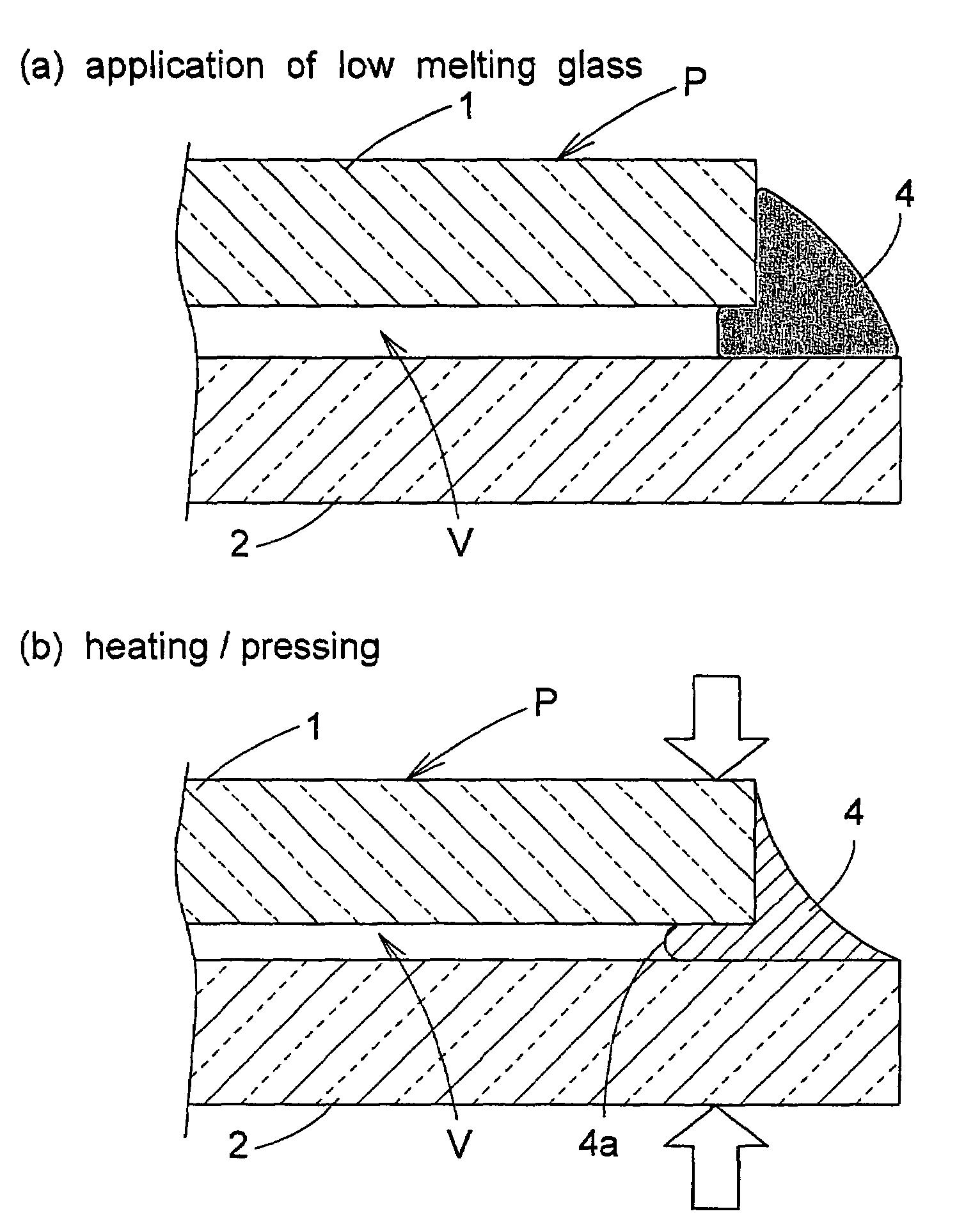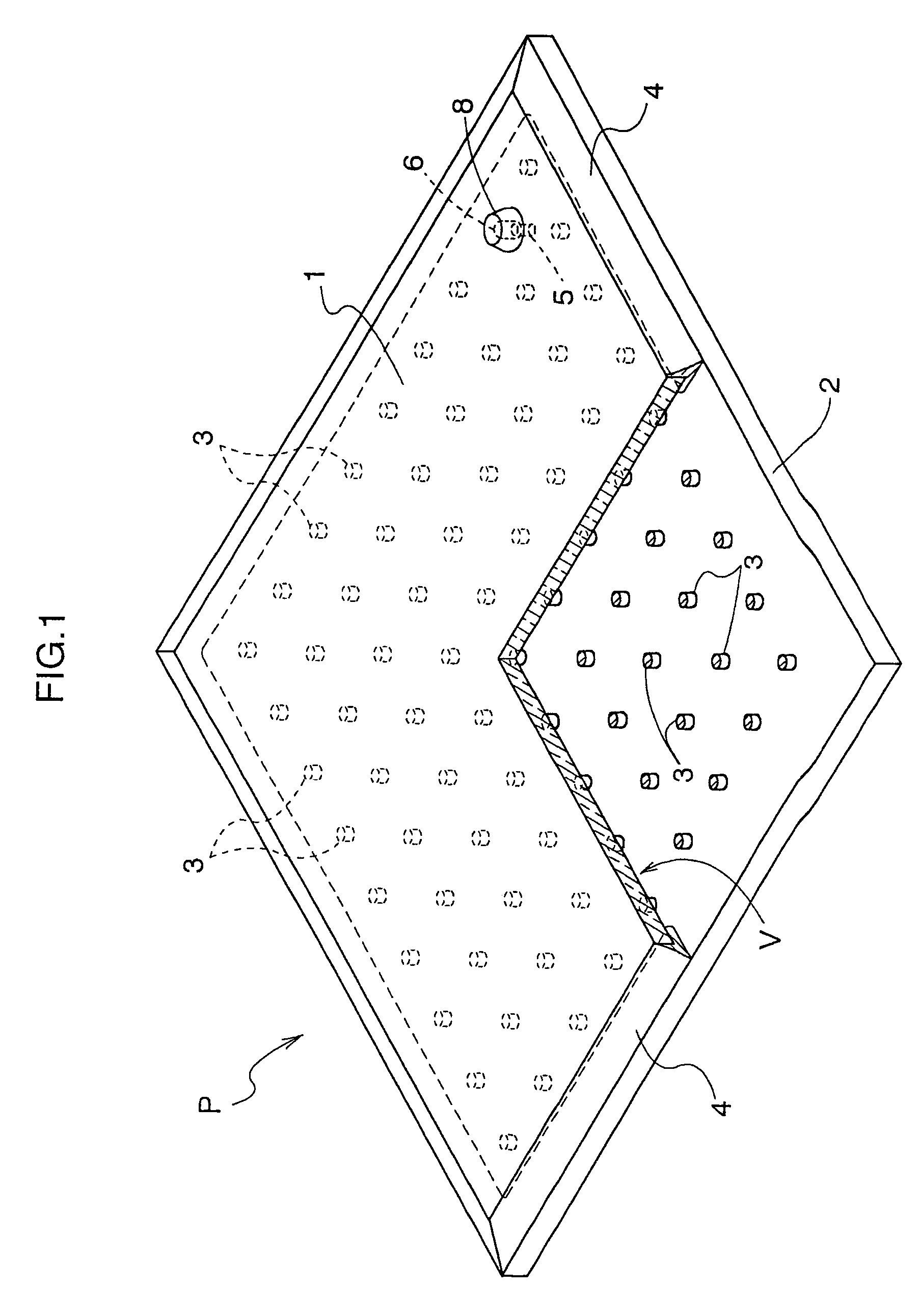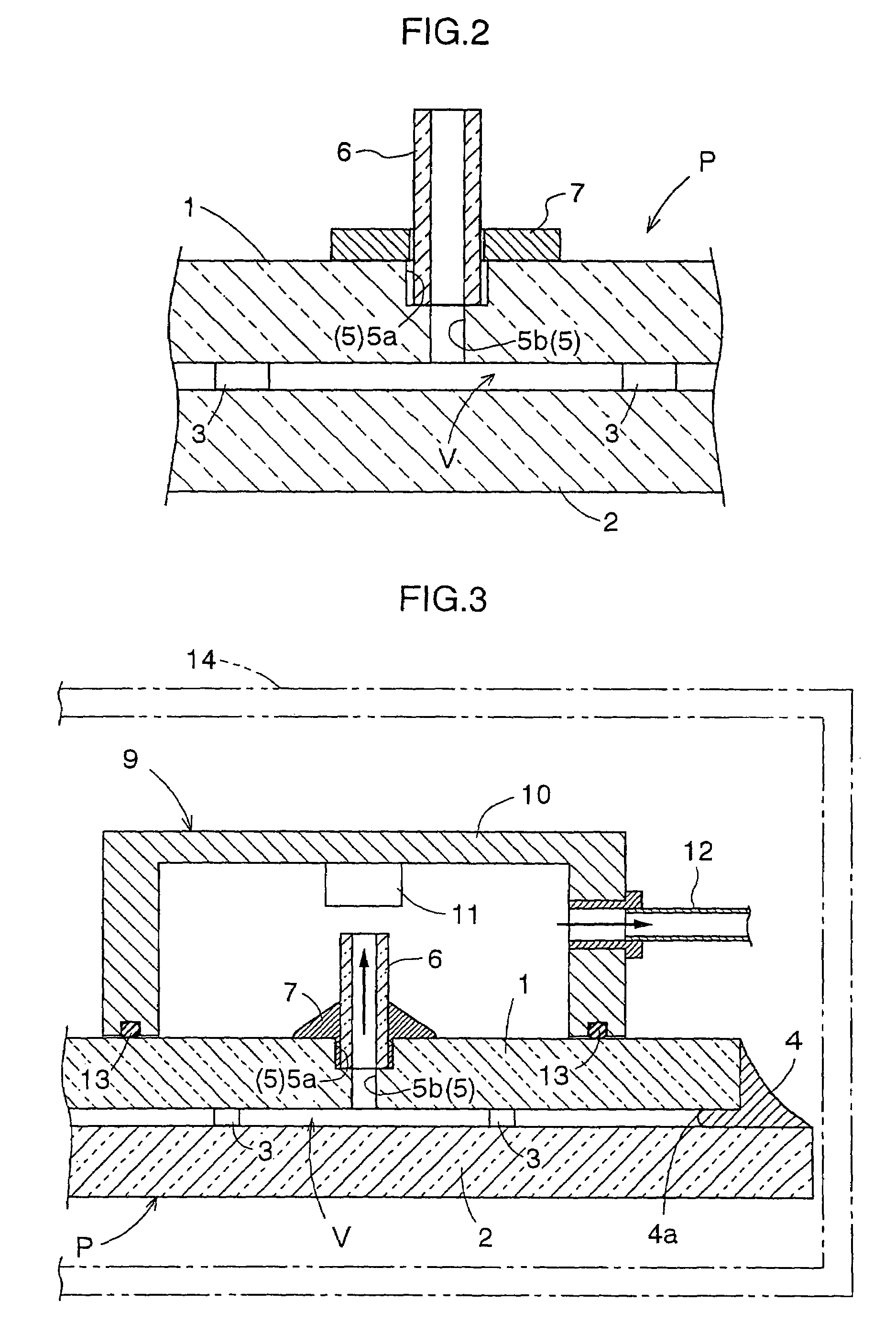Glass panel
a glass panel and glass technology, applied in the field of glass panels, can solve the problems of cracks and damage of sharp edges, cracks from sharp edges, etc., and achieve the effects of improving the strength of low melting glass, superior thermal insulation performance, and superior strength
- Summary
- Abstract
- Description
- Claims
- Application Information
AI Technical Summary
Benefits of technology
Problems solved by technology
Method used
Image
Examples
Embodiment Construction
[0027]An embodiment of a glass panel relating to the present invention will be described with reference to the accompanying drawings.
[0028]An example of such glass panel is a double glazing. This double glazing P, as shown in FIG. 1, includes a pair of glass sheets 1,2 and a number of spacers 3 interposed between faces of the two glass sheets 1,2, so that the two glass sheets 1, 2 are disposed in opposition to each other with forming a gap V therebetween. Peripheral edges of the two glass sheets 1,2 are bonded together with a low melting glass 4 which has a lower melting point than the two glass sheets 1, 2 and which also has a low gas permeability, and the gap V between the glass sheets 1, 2 is sealed under a depressurized state.
[0029]Each of the two glass sheets 1, 2 employs a transparent float glass sheet having a thickness ranging 2.65 mm to 3.2 mm. And, the gap V between the glass sheets 1, 2 is depressurized to 1.33 Pa (1.0×10−2 Torr) or lower.
[0030]Referring to the depressuri...
PUM
| Property | Measurement | Unit |
|---|---|---|
| viscosity | aaaaa | aaaaa |
| stress concentration | aaaaa | aaaaa |
| diameter | aaaaa | aaaaa |
Abstract
Description
Claims
Application Information
 Login to View More
Login to View More - R&D
- Intellectual Property
- Life Sciences
- Materials
- Tech Scout
- Unparalleled Data Quality
- Higher Quality Content
- 60% Fewer Hallucinations
Browse by: Latest US Patents, China's latest patents, Technical Efficacy Thesaurus, Application Domain, Technology Topic, Popular Technical Reports.
© 2025 PatSnap. All rights reserved.Legal|Privacy policy|Modern Slavery Act Transparency Statement|Sitemap|About US| Contact US: help@patsnap.com



